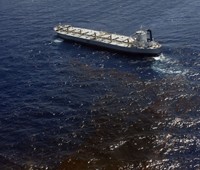Advertisement
Grab your lab coat. Let's get started
Welcome!
Welcome!
Create an account below to get 6 C&EN articles per month, receive newsletters and more - all free.
It seems this is your first time logging in online. Please enter the following information to continue.
As an ACS member you automatically get access to this site. All we need is few more details to create your reading experience.
Not you? Sign in with a different account.
Not you? Sign in with a different account.
ERROR 1
ERROR 1
ERROR 2
ERROR 2
ERROR 2
ERROR 2
ERROR 2
Password and Confirm password must match.
If you have an ACS member number, please enter it here so we can link this account to your membership. (optional)
ERROR 2
ACS values your privacy. By submitting your information, you are gaining access to C&EN and subscribing to our weekly newsletter. We use the information you provide to make your reading experience better, and we will never sell your data to third party members.
Business
Tiny Prospectors
Companies developing microbially enhanced oil recovery hope to gain traction with the industry
by Alexander H. Tullo
February 9, 2009
| A version of this story appeared in
Volume 87, Issue 6

TOURISTS BUYING overpriced sunglasses in Beverly Hills might be alarmed to learn that in the porous rock a mile beneath their feet, bacteria are slathering themselves in oil. They have been driven to do so with a chemical cocktail that oil workers injected into the ground. These microbes free trapped petroleum, boosting production at the mature urban oil field by 30%.
The technique is a kind of microbially enhanced oil recovery. MEOR isn't new. Oil companies experimented with it decades ago, but the method all but disappeared when oil prices tumbled in the mid-1980s. Given last year's run-up in oil prices and increased government emphasis on energy independence, U.S. companies have renewed their interest in the technology as a way to unlock hard-to-reach oil.
Between 300 billion and 600 billion barrels of oil lie under U.S. soil. But according to the Department of Energy, only about 21 billion of those barrels are economically recoverable with existing technology. Still, MEOR developers face an uphill battle. They have to convince oil-field operators who might have had bad experiences with microbes to try them one more time.
When oil fields are first tapped, natural pressure forces the oil up the wellhead. Primary recovery, as it is called, yields about 10% of the oil in place. Secondary recovery occurs when oil companies drill another well to inject water or natural gas to push the oil toward the surface. According to DOE, such techniques release another 10 to 30% of the oil in place.
Much of what remains is locked in deep underground pores by capillary pressure. "The rock is holding the oil, and the water is just flushing by it and can't mobilize that oil," says Edward van den Heuvel, business development manager for chemically enhanced oil recovery (EOR) at Shell Chemicals. This is when oil companies turn to EOR.
Larry W. Lake, a professor with the department of petroleum and geosystems engineering at the University of Texas (UT), estimates that EOR has the potential to economically dislodge some 30 billion bbl of additional U.S. oil, provided that oil prices remain above $40 per bbl. "At the right price, I don't think there is much question that one can expand the reserve base with this technology," he says.
EOR techniques change the properties of the oil in the well, reducing the capillary pressures holding it in place. This is done, van den Heuvel says, by reducing either the interfacial tension or the difference in viscosity between oil and water. For example, injecting steam into the ground lowers the viscosity of heavy oil. Chemical EOR works both ways, he notes. Polymers injected into the ground make the water thicker. Surfactants, such as those that Shell makes, reduce interfacial tension.
Carbon dioxide injection also is an EOR technique because, unlike natural gas, CO2 does more than merely pressurize the well; it becomes miscible with oil, Lake explains. "When it does that, it destroys the capillary forces and sweeps everything out," he says. But CO2-based EOR costs some $10 per bbl when based on natural carbon dioxide reservoirs, he says, and even more if the CO2 comes from industrial sources.
MEOR IS the most rarely used EOR technology, but it interests oil producers because it only requires injecting microbes and nutrients into existing wells without the need to add infrastructure, as with traditional methods. Depending on the strain, the microbes free the oil by partially digesting long hydrocarbons, by generating biosurfactants, or by emitting CO2.
In some circumstances, MEOR might be even cheaper than chemical EOR, says Steven L. Bryant, an associate professor at UT. "Surfactants are expensive," he says. "The great thing about microbes is that if you can get them to work, they'll work cheap."
MEOR is traditionally conducted by injecting bacterial cultures and carbohydrates, usually molasses, into the ground, according to Phillip D. Launt, president of Borger, Texas-based Ram Biochemicals. In contrast, Ram feeds nutrients into the ground to nurture microbes that are already there. The nutrients induce the bacteria to produce greater amounts of the natural surfactants that they normally use to metabolize petroleum.
The company recently received a $100,000 grant from DOE administered by the Stripper Well Consortium at Pennsylvania State University to try its method on 40 stripper wells. Such wells are nearing the end of their productive life; more than 400,000 of them in the U.S. are producing a total of 900,000 bbl of oil per day.
"The great thing about microbes is that if you can get them to work, they'll work cheap."
Houston-based WMI International uses MEOR to tackle a different problem. In oil recovery, paraffins separate from hydrocarbon mixtures as the temperature drops approaching the surface. "It's like a candle," says Joseph Jennings, WMI's chief executive officer. "When the low-viscosity wax runs down the side, cools, then reaches its melting point, it solidifies on the spot."
WMI injects bacteria that break these heavier hydrocarbons in half, allowing them to flow again. The microbes might also get into the rock formation itself and clear channels so oil can flow better. WMI has applied the technology to four stripper wells in the Four Corners area of New Mexico. In six months, production at these wells increased from fewer than 2 bbl per day to 7 bbl per day. Another well producing 1 bbl per day increased production to 63 bbl per day over six months. WMI is collaborating with Jacobs Engineering on the technology.
Like Ram, Beverly Hills-based Titan Oil Recovery enlists microbes in the ground to help oil recovery. Bradley R. Govreau, Titan's chief operating officer, says company technicians take samples of microbes in the oil field. As many as 300 different bacteria species can be lurking underground, he notes. "The secret is to first find out if the right microbes are there and then to come up with a specific nutrient formula to stimulate the microbes that we are interested in," he says. The nutrients include ammonium nitrate and organic compounds.
After the nutrients run out, the microbes go into a starvation state in which their surfaces become hydrophilic. They then place themselves in the oil-water interface, breaking off small, easier-flowing droplets of oil from larger ones.
Venoco, the firm that operates the Beverly Hills field, injected the Titan nutrients into an oil well that was producing some 20 bbl per day. Production increased to 55 bbl per day for three months. "The idea was to verify that the nutrient mix that Titan uses stimulates the microbes and releases the oil," says Bob Zahner, an engineer with Venoco. "And it did prove that concept." Engineers then applied the treatment to three injection wells in the Beverly Hills field. Production increased 30%.
THE SUCCESS in Beverly Hills is prompting Venoco to deploy the technology at an offshore oil platform in the Santa Barbara channel, Zahner says. For MEOR to catch on, he says, more companies like Venoco need to experiment with it. "The reason why MEOR has not been as widely used is just because the results have been inconsistent," he says. "It is something that is still being developed. You have to get some field results and get companies behind it before you really see any impact."
MEOR has to overcome outright bias against microbes as well, UT's Bryant says. "Microbes generally have a bad reputation in the oil patch," he says. "Usually microbes cause problems," such as generation of noxious hydrogen sulfide gas. "Tell an operator that you have this great concoction of bacteria and you want to put them into his field. That's a tough sales pitch."
And some MEOR treatments bandied about in the early 1980s simply didn't work. "Operators typically had experiences in the past where they were just as likely to plug a well with a molasses treatment as they were to get a good response," Titan's Govreau says.
In a sign that the technology is gaining traction, large companies are joining start-up firms in pursuing it. DuPont is exploring the application of its biological expertise to MEOR, says Jan Koninckx, the company's global business director for biofuels. "We have been interested in the field of MEOR and are studying the potential opportunities DuPont science can bring to bear," he says. The big Norwegian fertilizer producer Yara International already has a business supplying nutrients for MEOR.
Another obstacle is oil prices, which have tumbled to less than a third of the $147 per bbl they hit last July. MEOR developers counter that relatively low costs could make their technology insensitive to oil prices. Govreau says Titan's treatment can cost from $2.00 to $5.00 per bbl produced, depending on the well. His company did four treatments in 2007 and 21 in 2008 when oil prices peaked. But he has already done two treatments this year and has another four on order.
Current prices notwithstanding, U.S. oil supplies are dwindling. Govreau has his sights set on the billions of barrels still in the ground. "If we could get 1%, that would be big," he says. "If we could get 2%, that would be huge."




Join the conversation
Contact the reporter
Submit a Letter to the Editor for publication
Engage with us on Twitter